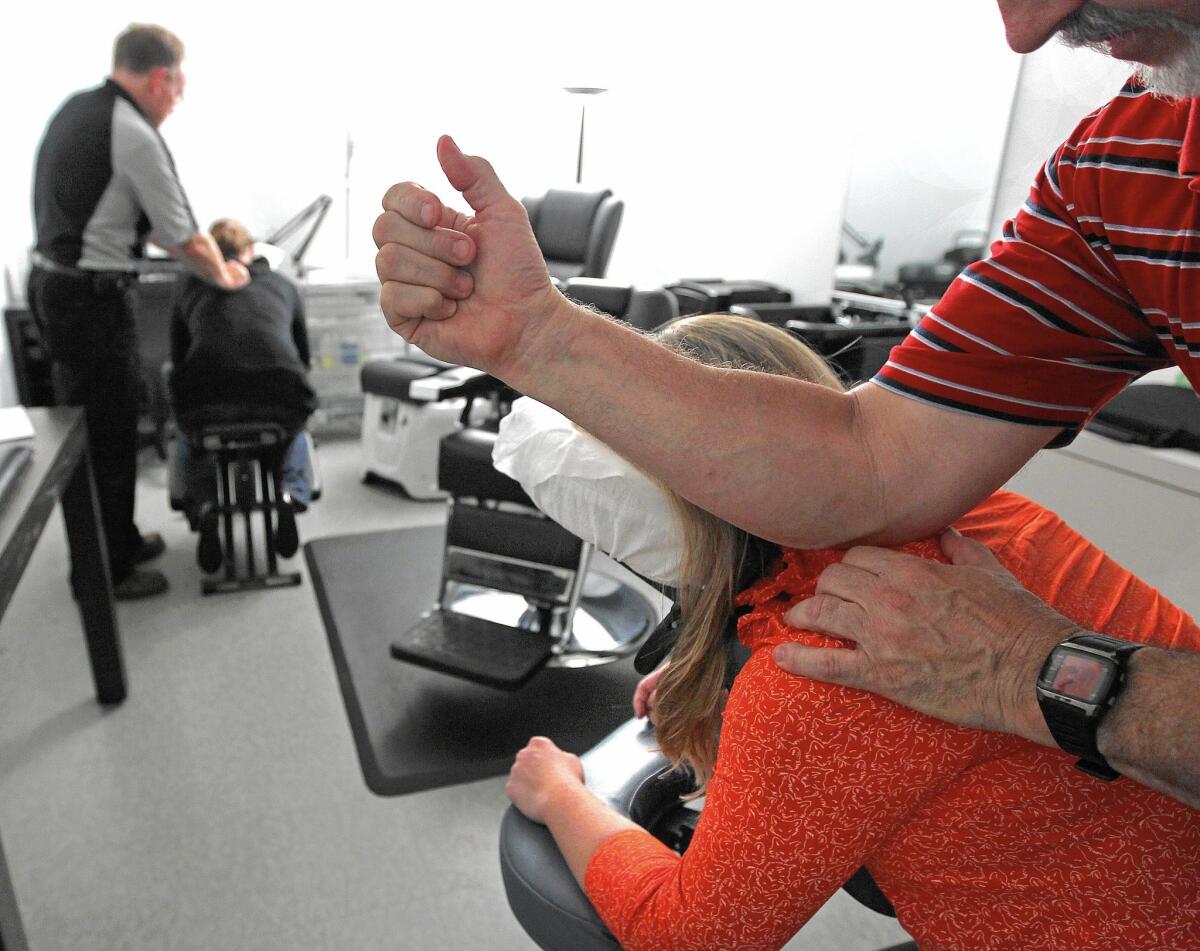What’s in and out in the world of workplace perks

Benefits such as on-site massage therapy are among the workplace perks offered by some companies.
Find the thought of workplace fitness contests a little awkward, or the idea of a company-provided “health and lifestyle coach” kind of eerie?
Too bad. In its latest annual survey of what’s in and what’s out in the world of employee perks, the Society of Human Resource Management found that wellness benefits are only increasing in prevalence.
For years, companies have been doing things like offering smoking cessation programs and rewarding employees with discounts for taking health assessments. But Evren Esen, the society’s director of survey programs, said this year’s data show that a greater range of benefits are quickly “becoming more integrated into the organizational fabric of companies.”
The report shows a significant jump from 2014 to 2015 in several different wellness benefits, such as fitness competitions — which 34% of respondents now say they offer. “It shows that organizations are taking wellness to the next level,” she said.
In addition to showing the increased focus on wellness plans, the data revealed other broader trends.
The survey examined the prevalence of more than 300 benefits: things like dental insurance (offered by 96% of respondents), 401(k) plans (90%), on-site massage therapy (11%) and prepared take-home meals (1%).
And 35% of the 463 randomly selected HR professionals who answered the survey said they have raised the number of benefits they’re offering this year. That’s up from 28% in 2014, which could be a sign that companies are piling on perks and one-time rewards — rather than raising wages across the board.
Among those benefits, paid leave has been particularly expanding.
Whether spurred by local legislation or in an attempt to preempt regulatory changes, 42% of the HR pros said their companies now offer a paid sick leave plan, up from 33% in 2014. (The survey sample, which is reflective of HR society membership, skews toward smaller companies — only about a third of respondents worked at companies with more than 500 people.)
The survey also showed an uptick in companies offering personal investment and financial advice, both of which are up significantly.
One-time financial incentives are also on the rise, including things such as “spot bonuses” in response to good work (45% said they offer them, up from 34% in 2011) or incentive bonus plans for non-executives (49%, up from 40% last year).
And yet, what’s often most interesting in such reports is the peek into what new and sometimes odd perks are being granted to employees — even if only a minor few.
In this year’s survey, 17% of respondents said employees can fly first or business class, even on domestic flights — the highest percentage recorded since 2011.
An additional 8% said employees get their birthday off, paid. And 2% offer unlimited paid time off. Meanwhile, 9% offer pet health insurance and 2% said they offer egg-freezing benefits.
Then, of course, it’s also interesting to see which perks companies are phasing out.
Although Esen said there were very few big declines in this year’s numbers, a few were notable — such as reimbursing people for personal calls while they’re on business travel (37%, down from 51% in 2011) or allowing employees to bring their children to work in an emergency (22%, down from 33% in 2011).
And with all those wellness programs and other perks, companies must think their employees are more relaxed … because just 5% said their companies offer “on-site stress reduction programs,” down from 12% in 2011.
Jena McGregor writes a daily column analyzing leadership in the news for the Washington Post’s On Leadership section.
More to Read
Inside the business of entertainment
The Wide Shot brings you news, analysis and insights on everything from streaming wars to production — and what it all means for the future.
You may occasionally receive promotional content from the Los Angeles Times.










